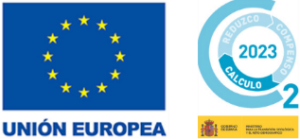A national brand of reference in cleaning products has trusted in J. Huesa for the adaptation of process water to its production process after the expansion of the production capacity of its manufacturing centre located in Andalusia.
On this occasion, our client needed to obtain water free of salinity and organic contamination to include it in its production process. Considering the objectives set by our client and the general objectives of the project, we carried out the study, design, customised manufacture, installation and commissioning of a water treatment plant in accordance with the following treatment train:
Pretreatment
The installation has been designed taking into account the following parameters:
| Source of Raw water | Softened Raw Water |
| Inlet flow | 5,7 m3/h |
| Recovery | 70 % |
| Product flow | 4 m3/h |
| Reject flow | 1,7 m3/h |
| Working hours | 16h/day |
The raw water comes from a softened water storage tank, so that the hardness of the water at the reverse osmosis inlet will be minimal or nil. The water is sucked in by a pressure group that passes the water through a dechlorinator prior to its passage through the reverse osmosis system.
Specifically, an active carbon filter has been installed which filters and eliminates the chlorine present in the water in the line, as the chlorine must be zero to guarantee the correct functioning of the reverse osmosis membranes and prevent their damage. This filter is equipped with an automatic chronometric valve that performs automatic filter cleaning.
Reverse Osmosis

The filtered water to be fed to the reverse osmosis plant is dosed with biocide. In this way, the possible organic contamination that may originate inside the membranes is eliminated and, in addition, as the biocide is able to permeate the membrane, part of it will come out through the permeate and will move with the water to the storage tank, also preventing possible organic contamination inside the storage tank. This dosing takes place a couple of times a day, as programmed by the plant’s PLC.
The pre-treated water passes to the reverse osmosis module, where it is first filtered through 5-micron pore-size cartridges, which will retain possible leaks of particles, suspended solids, and so on.
The safety filter consists of replaceable 5-micron cartridges, which are controlled by means of a pressure difference controlled by two pressure gauges placed at the inlet and outlet of this. The frequency of cartridge replacement depends on the colloidal mater of the water.
To ensure the passage of water through the reverse osmosis membranes, a high-pressure vertical centrifugal pump made of 316 stainless steel has been installed to guarantee the plant’s operating pressure.
The membranes are installed in coiled GRP pressure vessels, have a spiral wound configuration, are made of polyamide, and are specially designed for brackish water up to 8000 ppm and have the characteristic of working at low pressure. These membranes have a high chemical resistance, as they can work in a pH range of 2 to 13, which makes them very easy to clean and recover, as they can accept a wide variety of cleaning chemicals.
A flushing system has been included in the reverse osmosis skid, consisting of a reagent preparation tank, stainless steel recirculation pump and stainless-steel isolation and recirculation valves.
The water treatment plant is equipped with numerous instruments (automatic valves, pressure switches and pressure transmitters, among others) which are centralised in an electrical panel located in the skid. The flow rates of treated water, recirculation and reject are measured continuously by means of rotameters, which allow us to visually always know what flow rates the equipment is working with.








